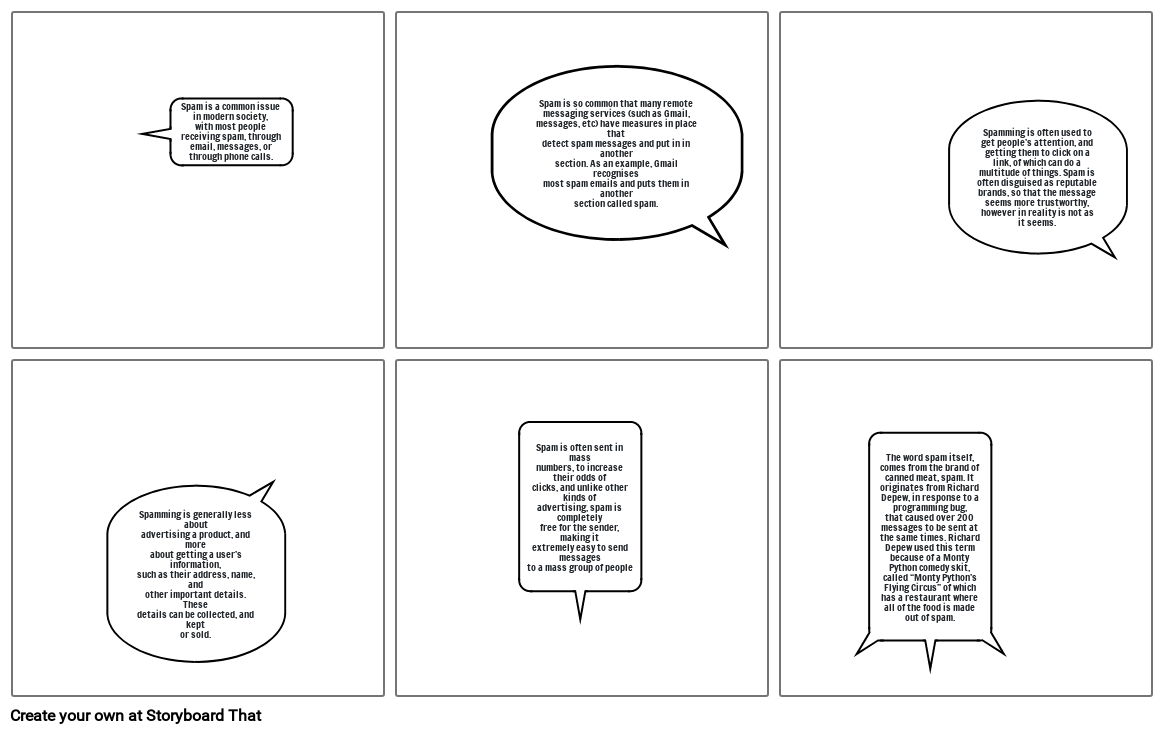
Storyboard Text
- Spam is a common issue in modern society,with most people receiving spam, throughemail, messages, or through phone calls.
- Spam is so common that many remotemessaging services (such as Gmail,messages, etc) have measures in place thatdetect spam messages and put in in anothersection. As an example, Gmail recognisesmost spam emails and puts them in anothersection called spam.
- Spamming is often used to get people’s attention, andgetting them to click on a link, of which can do amultitude of things. Spam is often disguised as reputablebrands, so that the message seems more trustworthy,however in reality is not as it seems.
- Spamming is generally less aboutadvertising a product, and moreabout getting a user’s information,such as their address, name, andother important details. Thesedetails can be collected, and keptor sold.
- Spam is often sent in massnumbers, to increase their odds ofclicks, and unlike other kinds ofadvertising, spam is completelyfree for the sender, making itextremely easy to send messagesto a mass group of people
- The word spam itself, comes from the brand ofcanned meat, spam. It originates from RichardDepew, in response to a programming bug,that caused over 200 messages to be sent atthe same times. Richard Depew used this termbecause of a Monty Python comedy skit,called “Monty Python’s Flying Circus” of whichhas a restaurant where all of the food is madeout of spam.
Over 30 Million Storyboards Created
No Downloads, No Credit Card, and No Login Needed to Try!
